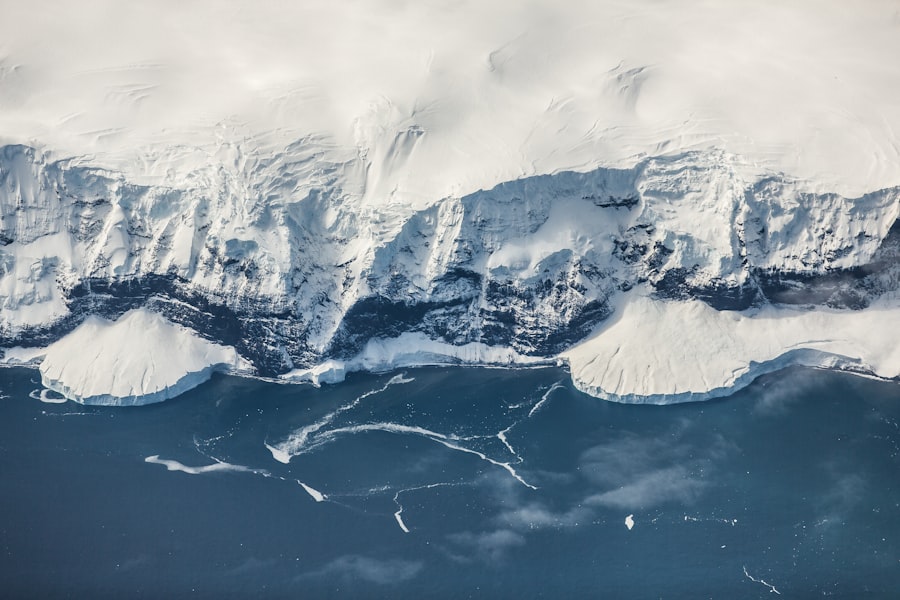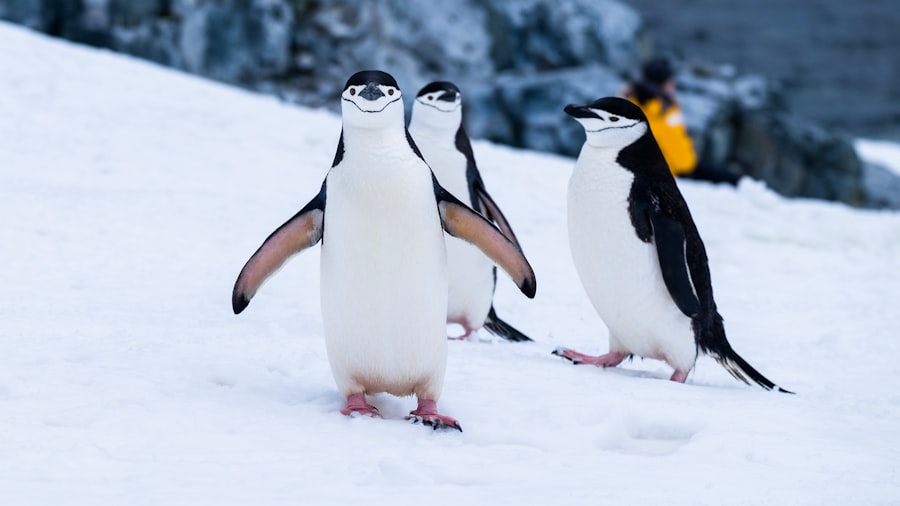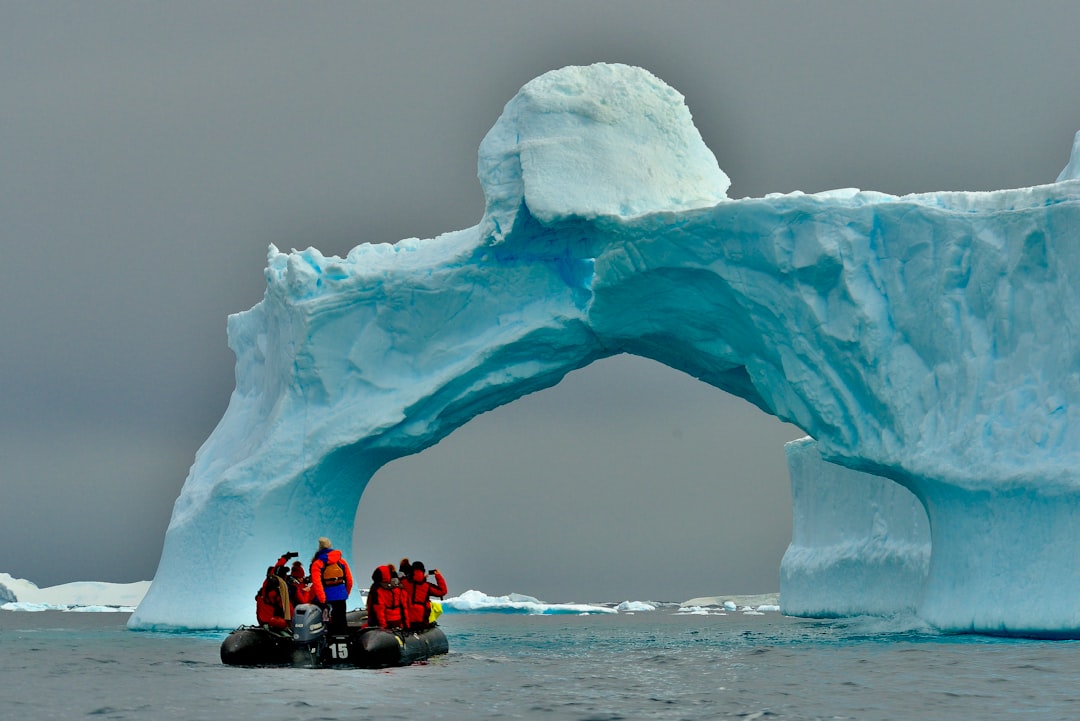The Drake Passage, a body of water that separates South America from Antarctica, is renowned for its tumultuous seas and unpredictable weather. Stretching approximately 600 miles, this passage is often regarded as one of the most challenging maritime routes in the world. It serves as a critical gateway for vessels traveling to the Antarctic region, making it a focal point for explorers, researchers, and adventure seekers alike.
The passage is not only significant for its geographical location but also for its rich marine biodiversity and unique ecosystems that thrive in its cold waters. Navigating the Drake Passage is an experience that evokes both awe and trepidation. The waters are known for their strong currents and high waves, which can create a rollercoaster-like experience for those aboard.
Despite its challenges, the Drake Passage has become a rite of passage for many who wish to explore the pristine landscapes of Antarctica. The allure of the icy continent, combined with the thrill of traversing these notorious waters, draws countless travelers each year, eager to witness the breathtaking beauty and raw power of nature.
Key Takeaways
- The Drake Passage is a body of water between South America’s Cape Horn and the South Shetland Islands of Antarctica, known for its rough seas and challenging navigation.
- Early explorers like Sir Francis Drake and Captain James Cook played significant roles in the exploration of Antarctica, paving the way for modern expeditions to the region.
- Navigating the Drake Passage poses challenges such as unpredictable weather, strong winds, and rough seas, making it essential to choose a reputable and well-equipped cruise for the journey.
- When selecting a cruise for the journey, consider factors such as the ship’s size, amenities, itinerary, and the expertise of the crew and expedition team.
- A cruise through the Drake Passage offers the opportunity to witness breathtaking landscapes, diverse wildlife, and unique experiences such as zodiac excursions and visits to research stations.
History of exploration in Antarctica
The history of exploration in Antarctica is a tale of human curiosity and resilience against the harshest conditions on Earth. The continent remained largely untouched until the early 19th century when explorers began to venture into its icy realms. Notable figures such as James Cook and Fabian von Bellingshausen were among the first to chart parts of the Antarctic coastline, laying the groundwork for future expeditions.
Their journeys were fraught with peril, as they faced extreme cold, treacherous ice formations, and unpredictable weather patterns. As the 20th century approached, interest in Antarctica surged, leading to a series of ambitious expeditions. The heroic age of Antarctic exploration saw figures like Ernest Shackleton and Robert Falcon Scott embark on legendary journeys that tested the limits of human endurance.
Shackleton’s ill-fated Endurance expedition in 1914 became a symbol of survival against overwhelming odds, while Scott’s tragic journey to the South Pole highlighted the dangers inherent in polar exploration. These early explorers not only contributed to our understanding of the continent but also ignited a passion for scientific research that continues to this day.
The challenges of navigating the Drake Passage

Navigating the Drake Passage presents a myriad of challenges that can test even the most seasoned mariners. The passage is notorious for its rough seas, where strong winds and powerful currents converge to create formidable waves that can reach heights of over 30 feet. These conditions can lead to a tumultuous journey, often resulting in seasickness for passengers unaccustomed to such instability.
The unpredictability of the weather adds another layer of complexity, as storms can arise suddenly, forcing vessels to alter their course or seek shelter. In addition to the physical challenges posed by the Drake Passage, navigational difficulties also arise due to its unique geography. The convergence of the Atlantic and Pacific Oceans creates a dynamic environment where currents can shift rapidly.
This necessitates careful planning and skilled seamanship to ensure safe passage. Modern technology has improved navigation through this treacherous waterway, but it remains essential for crews to remain vigilant and adaptable in the face of changing conditions.
Choosing the right cruise for your journey
| Cruise Line | Destinations | Duration | Price Range |
|---|---|---|---|
| Royal Caribbean | Caribbean, Europe, Alaska | 3-14 days | 500-3000 |
| Carnival Cruise Line | Bahamas, Mexico, Caribbean | 3-7 days | 300-1500 |
| Norwegian Cruise Line | Hawaii, Mediterranean, South America | 7-21 days | 800-4000 |
Selecting the right cruise for a journey through the Drake Passage is crucial for ensuring a memorable and enjoyable experience. With numerous operators offering various itineraries and amenities, travelers must consider their preferences and priorities when making a choice. Some cruises focus on luxury and comfort, providing spacious cabins, gourmet dining options, and onboard entertainment.
Others prioritize adventure and exploration, offering smaller vessels that can navigate closer to shorelines and ice formations. It is also important for travelers to consider the duration of their cruise and the specific destinations included in the itinerary. Some cruises may offer shorter trips that focus solely on crossing the Drake Passage, while others provide extended journeys that allow for deeper exploration of Antarctica’s stunning landscapes and wildlife.
Researching reviews and testimonials from previous passengers can provide valuable insights into what to expect from different cruise lines, helping travelers make an informed decision that aligns with their travel goals.
What to expect on a cruise through the Drake Passage
A cruise through the Drake Passage promises an array of experiences that blend adventure with relaxation. As passengers embark on their journey, they are greeted by knowledgeable crew members who provide safety briefings and insights into what lies ahead. The initial crossing can be exhilarating, with many travelers experiencing a mix of excitement and apprehension as they encounter the famous waves of the passage.
For some, this may be their first taste of life at sea, while others may relish the thrill of navigating such challenging waters. Onboard activities during the cruise often include educational lectures led by experts in marine biology, geology, and climate science. These presentations enhance passengers’ understanding of the unique ecosystems they will encounter in Antarctica.
Additionally, many cruises offer opportunities for wildlife spotting from observation decks or through guided excursions on small boats known as zodiacs. As travelers cross the Drake Passage, they can expect breathtaking views of the ocean and glimpses of seabirds soaring overhead, setting the stage for their Antarctic adventure.
Wildlife encounters in the Antarctic region

The Antarctic region is renowned for its diverse wildlife, making it a prime destination for nature enthusiasts and wildlife photographers alike. As travelers venture into these icy waters, they may encounter an array of fascinating species that have adapted to survive in one of Earth’s most extreme environments. Penguins are perhaps the most iconic inhabitants of Antarctica, with several species such as the Emperor and Adélie penguins captivating visitors with their charming antics and social behaviors.
In addition to penguins, travelers may also spot seals lounging on ice floes or frolicking in the frigid waters. Species such as Weddell seals and leopard seals are commonly seen during cruises, providing opportunities for memorable wildlife encounters. Whales are another highlight of Antarctic wildlife watching; humpback whales and orcas are often spotted during migrations through these nutrient-rich waters.
The chance to witness these magnificent creatures in their natural habitat adds an unforgettable dimension to any journey through the region.
Activities and excursions during the cruise
Cruising through Antarctica offers a wealth of activities and excursions designed to immerse travelers in the stunning landscapes and unique ecosystems of the region. Many cruise operators provide guided shore landings where passengers can step foot on the continent itself, exploring pristine beaches and observing wildlife up close. These excursions often include hikes led by experienced naturalists who share insights into the flora and fauna encountered along the way.
In addition to shore landings, many cruises offer opportunities for kayaking among icebergs or zodiac excursions that allow passengers to navigate through narrow channels and get closer to glaciers. These activities provide a sense of adventure while fostering a deeper appreciation for Antarctica’s breathtaking beauty. For those seeking a more leisurely experience, onboard amenities such as hot tubs or observation lounges offer comfortable spaces to relax while taking in panoramic views of the surrounding landscapes.
Packing tips for a trip to Antarctica
Packing for a trip to Antarctica requires careful consideration due to the extreme weather conditions travelers may encounter. Layering is key; individuals should pack moisture-wicking base layers, insulating mid-layers such as fleece or down jackets, and waterproof outer layers to protect against wind and precipitation. Sturdy waterproof boots are essential for shore landings, while gloves, hats, and scarves will help keep extremities warm during outdoor excursions.
In addition to clothing, travelers should consider bringing personal items such as sunscreen and lip balm with high SPF protection due to the intense sun reflecting off snow and ice. Binoculars are also recommended for wildlife watching, allowing passengers to observe animals from a distance without disturbing them. A good camera with extra batteries is essential for capturing memories of this once-in-a-lifetime journey through one of Earth’s last frontiers.
Safety precautions for navigating the Drake Passage
Safety is paramount when navigating the Drake Passage, given its reputation for unpredictable weather and challenging sea conditions. Cruise operators prioritize passenger safety by conducting thorough safety briefings before departure and ensuring that all crew members are trained in emergency procedures. Passengers are encouraged to familiarize themselves with safety protocols and equipment onboard, including life jackets and emergency exits.
Cruise operators often monitor forecasts closely and may adjust itineraries as needed to ensure safe navigation through rough waters. Passengers should also be mindful of their own health; those prone to seasickness may benefit from consulting with a healthcare professional before embarking on their journey or bringing along over-the-counter remedies.
Environmental conservation efforts in Antarctica
Antarctica is not only a place of stunning beauty but also a region that faces significant environmental challenges due to climate change and human activity. As interest in Antarctic tourism grows, so too does the need for responsible practices that protect its fragile ecosystems. Various organizations work tirelessly to promote conservation efforts in Antarctica, advocating for sustainable tourism practices that minimize environmental impact.
Cruise operators are increasingly adopting eco-friendly measures such as reducing waste production onboard and implementing strict guidelines for wildlife interactions during excursions. Many companies participate in initiatives aimed at preserving marine habitats and supporting scientific research focused on understanding climate change’s effects on polar regions. By prioritizing conservation efforts, travelers can enjoy their adventures while contributing to safeguarding this pristine environment for future generations.
The impact of climate change on the Antarctic region
Climate change poses a significant threat to Antarctica’s delicate ecosystems, with far-reaching implications for global sea levels and biodiversity. Rising temperatures have led to accelerated ice melt in glaciers and ice sheets, contributing to rising sea levels that affect coastal communities worldwide. The loss of sea ice also disrupts habitats for species such as seals and penguins that rely on stable ice platforms for breeding and feeding.
Moreover, changes in ocean temperatures impact marine life throughout the Southern Ocean, affecting food chains that sustain both wildlife and human populations dependent on fishing industries. As scientists continue to study these changes, it becomes increasingly clear that addressing climate change is crucial not only for protecting Antarctica but also for ensuring a sustainable future for our planet as a whole. Awareness raised through tourism can play a vital role in fostering a sense of responsibility toward environmental stewardship among travelers who visit this remarkable region.
In conclusion, navigating the Drake Passage offers an unparalleled opportunity to explore one of Earth’s last frontiers while encountering breathtaking landscapes and diverse wildlife. With careful planning and consideration of safety measures, travelers can embark on an unforgettable journey that not only satisfies their adventurous spirit but also contributes to ongoing conservation efforts aimed at preserving this unique environment amidst pressing global challenges like climate change.
If you’re planning a cruise to Antarctica and are curious about navigating the infamous Drake Passage, you might find this related article insightful. It delves into the challenges and wonders of crossing this legendary stretch of water, offering tips and experiences from seasoned travelers. For more detailed information and personal accounts, you can explore this comprehensive guide on Antarctic cruises. This resource provides valuable insights into what to expect when embarking on this extraordinary journey to the southernmost continent.
WATCH HERE: Drake Passage: Earth’s Deadliest Waters Revealed
FAQs
What is the Drake Passage?
The Drake Passage is the body of water between the southern tip of South America and the northern tip of the Antarctic Peninsula. It is known for its rough seas and strong winds, making it one of the most challenging and unpredictable parts of the journey to Antarctica.
What is a cruise to Antarctica via the Drake Passage?
A cruise to Antarctica via the Drake Passage is a popular way for tourists to visit the Antarctic Peninsula. The journey typically involves crossing the Drake Passage by ship, which can take around 2-3 days depending on weather conditions. Once in Antarctica, passengers can explore the stunning landscapes, wildlife, and scientific research stations.
What should I expect during a cruise to Antarctica via the Drake Passage?
Passengers should expect rough seas and potentially challenging sailing conditions during the crossing of the Drake Passage. Seasickness is common, so it’s important to be prepared with appropriate medication. Once in Antarctica, passengers can expect to see breathtaking scenery, wildlife such as penguins and seals, and possibly even take part in activities like kayaking or hiking.
When is the best time to take a cruise to Antarctica via the Drake Passage?
The best time to take a cruise to Antarctica via the Drake Passage is during the Antarctic summer, which runs from November to March. This is when the weather is milder, wildlife is most active, and the sea ice has melted enough to allow for easier navigation through the passage.
What should I pack for a cruise to Antarctica via the Drake Passage?
Passengers should pack warm, waterproof clothing, including insulated jackets, gloves, hats, and sturdy waterproof boots. It’s also important to bring seasickness medication, as the crossing of the Drake Passage can be rough. Additionally, a good camera and binoculars are essential for capturing the stunning scenery and wildlife.
